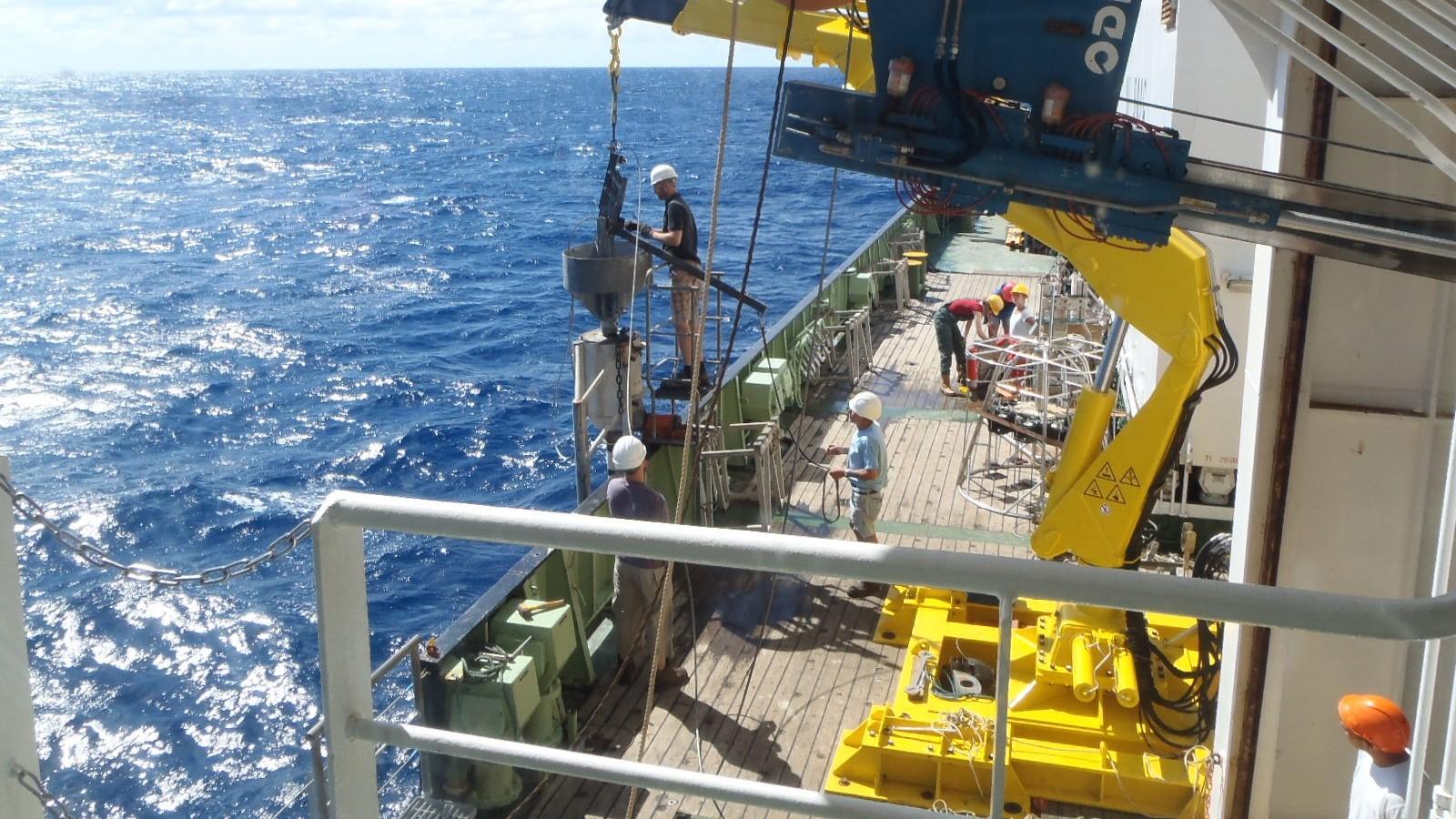
Submitted by Dr C.M. Martin-Jones on Fri, 05/08/2022 - 09:26
Close to a million years ago our planet’s climate changed, as the intensity of the great ice ages increased. Now scientists at the University of Cambridge have found that this climatic shift was associated with a decrease in oxygen and an increase in carbon storage in the deep ocean, causing carbon dioxide in the atmosphere to decline.
The findings, reported in the journal Science, reveal that a drop in atmospheric CO2 levels during glacial periods cooled the climate, permitting ice sheets on the continents to grow larger. These findings shed light on the link between the greenhouse effect and the great ice ages.
The research, led by Nicola Thomas of Cambridge’s Department of Earth Sciences, applied a new method to estimate deep-sea oxygen, based on measurements of carbon isotope ratios in single-celled organisms known as foraminifera.
Atmospheric CO2 concentrations are lower when deep-sea carbon storage is increased. This carbon storage is linked to a decrease in deep-sea oxygen concentrations. By investigating the changes in oxygen concentration of the seawater, they were able to infer how much extra carbon was stored in the deep ocean during cold glacial times around one million years ago.
“Our findings provide strong evidence for decreased oxygen in the deep sea and increased drawdown of atmospheric CO2 during glacial stages, starting at around 960 thousand years ago,” said Thomas.
The study, which also involved David Hodell and Harold Bradbury from Cambridge Earth Sciences, marks the first time the method has been used to obtain data on deep water oxygen in detail across this time period.
Our planet’s ice sheets have waxed and waned during the last 2.6 million years. However, there was a significant change in glacial patterns roughly a million years ago, known as the Mid-Pleistocene Transition, when the frequency of ice ages shifted from every 41,000 years to every 100,000 years. At the same time, the intensity increased and ice sheets grew bigger.
Scientists have long puzzled over what triggered this change. Cycles of ice ages are related to regular changes in Earth’s orbit in relation to the Sun, meaning that the solar energy Earth receives fluctuates over time. Yet research has shown these orbital cycles did not change a million years ago.
The new evidence strengthens one of the existing theories for the transition: that a decrease in atmospheric CO2 during ice ages caused our Earth to respond differently to orbital cycles.
The new study compared carbon atoms of seafloor-dwelling foraminifera in oxygenated seawater with foraminifera that lived within the seabed sediment at the depth where there is no longer oxygen. The difference in carbon between these two species of foraminifera can then be used to calculate the oxygen concentration of the deep-water. In turn, the amount of carbon stored in a water mass can then be estimated.
“Paleo-oxygen has historically been very difficult to reconstruct,” said Thomas, “This study is the first time that this very new tool has been applied over such a long period of time, the last 1.5 million years. This method, which has only been developed in the last few years, has really enhanced our ability to investigate significant events in climate history.”
Postdoctoral researcher, Harold Bradbury, was involved in the new analysis, “These findings are interesting, because the methods have come at the question from a different angle and found evidence to support and strengthen an existing theory about this period in climate history. I’m excited to see where this approach will take us next, what other applications we can consider that would benefit from this methodology.”
One of the big challenges to understanding the Mid-Pleistocene Transition has been the difficulty in measuring changes in atmospheric CO2 this far back in time. Although scientists can measure bubbles of air trapped in ice cores, these do not yet cover the past million years. The new approach of investigating the deep-water oxygen record agrees closely with available ice core data but extends back further in time.
Thomas cautions that, although they find strong evidence to implicate atmospheric CO2 in causing the Mid Pleistocene Transition, further direct evidence would be beneficial.
“The findings of our study are from just one site. However, the results come at an exciting time for paleoclimatology. The European ice coring project ‘Beyond EPICA - Oldest Ice’ plans to drill an ice core reaching back 1.5 million years from which a record of atmospheric CO2 can be measured. Our deep ocean oxygen concentration record will provide ice core scientists with a complementary marine record for comparing atmospheric CO2 and deep-sea carbon storage.”
Thomas, N. C., Bradbury, H. J. and Hodell, D. A., 2022, Changes in North Atlantic deep-water oxygenation across the Middle Pleistocene Transition, Science DOI science.org/doi/10.1126/science.abj7761
